
The Risala by Ibn Fadlan It is not very prodigal in fantastic stories and not at all prone to supernatural explanations of what is observed. What the Muslim sage is describing in this passage are the northern lights that he observed on his trip to Russia, on the banks of the Volga, in the middle of the Viking Age. The phenomenon amazed him, and he knew no other way to describe it, as perhaps many others would have before such a fascinating celestial spectacle. Consulting after this episode the Bulgarian king who dominated that territory, he explained that, in ancient times, his ancestors said that the armies that opposed in those nebulous lights were those of believers and non-believers among the djinn (geniuses), immersed in an eternal battle that never decided on one side or the other. And truly the journey that took Ibn Fadlan north is a story of believers, non-believers and wondrous lights.
For millennia, people from all backgrounds and from very different cultures have traveled to faraway and unknown places, awakening their own consciousness and, hopefully, that of others through their own narrations of the lived. Perhaps often these were accompanied by great exaggerations, magnifying unique and singular experiences. Sometimes his deeds were sung, and others were perhaps written for the knowledge of others, especially when his experiences referred to little or nothing known cultures and customs in his place of origin. The development of the history of the human being is intimately linked to this type of contact and, why not, to these stories that nourish our spirit, and even over the centuries and in a world as globalized as the current one, in the that everything seems much closer and within reach, the observation of other cultures, so different from our own, continues to fascinate us as if we were children listening with attention and fascination to the stories of our grandparents.
Ibn Fadlan, a man of faith
Ahmad ibn Fadlan ibn al-‘Abbasibn Rashid ibn Hammad made the journey he recounts in his Risala between 921-922 by order of the Abbasid caliph of Baghdad, then al-Muqtadir bi-llāh (895-932), at the head of an embassy bound for the court of the Volga Bulgarian kingdom , sent in response to the letter that King Almish ibn Shilki Elteber sent to the caliph requesting his help in some matters. The Risala It is an account of the experience of that trip written in Arabic in the handwriting of the caliph's envoy that is known thanks to a manuscript found in Mashhad (Iran) in 1923, although previously there was evidence of some references in works from the 13th century – especially that of the geographer Yaqut in his Lexicon of countries – and later. The Mashhad manuscript is an 11th century copy which is today a unicum , but ends unfortunately incomplete in the part where Ibn Fadlan describes the Khazari Khanate.
The story of the Muslim traveler is framed in a historical moment in which Islam was experiencing a great flourishing in the development of sciences, literature and art, at the same time as there was a certain thrust of an expansive religious policy that was less tolerant of other religions in the occupied territories, partly due to the aggressive rivalry between the Abbasid dynasty and its Fatimid competitors in Egypt. According to himself in his Risala , Ibn Fadlan was maula (“assistant”) of Muhammad ibn Sulaiman –a very influential man in the caliphal court–, as well as a character versed in Islamic law. At that time, the Volga Bulgars followed the doctrine of the Hanafi school, common in the western region of Central Asia, instead of the Shafiite (see “Religion in al-Andalus:intellectual currents, beliefs and practices”, in Archeology and History No. 22) that was practiced in the court of Baghdad, so one of its main purposes was to help the Bulgarian population to start in the correct way of understanding the Islamic faith. Faithful to the orders of the caliph, he undertook the imposed task with great resolution even despite encountering serious obstacles to the fulfillment of the entrusted mission. We know little about the character himself apart from his work, and we are not very certain as to the repercussion that this reached among the Abbasid geographers, although surely the information about that strange pagan world that Ibn Fadlan compiled during his travels influenced geographical works later Arabic ones, such as that of al-Jaihani (Book of Routes and Kingdoms ), whom he met personally in Bukhara on the aforementioned trip.
To the lands of ice
In the 10th century, when the caliph's envoy completed his mission by heading towards the cold lands of the north, the north-south trade circuits they were as alive and active as those of the West-East on the famous Silk Road (see Archeology and History #29:Marco Polo and the Silk Road ). In fact, some researchers have used the term "fur route" to define these commercial circuits that linked the Baltic territories with southern Eurasia. The dynamism of trade was encouraged from the 8th century onwards by the great supply existing in Central Asia and among the peoples of the steppes of this type of product, especially mink, ermine, beaver or fox fur, as well as honey and dried fish:
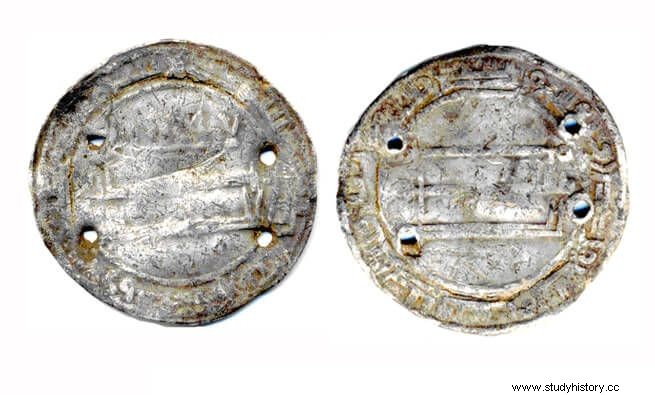
On the contrary, craftsmanship in precious metals, silver, especially, easily reached the Ugric-speaking peoples of northern Russia, as evidenced by archaeology, which notes a particular focus of finds in the Kama River region. In the same way, the fluidity of commercial dynamics is also reflected, among other things, in the large quantities of Byzantine and Muslim coins found in Scandinavia. Abbasid silver dirham finds in Swedish hoards number in the thousands, and the Islamic currency was accepted for commercial exchange even in northern Russia. For its part, walrus or narwhal ivory was highly prized in the Islamic world, as was the much more exotic mammoth horn ivory recovered from Russian ice. The intense trade between the Baltic and the Byzantine Empire tended to grow from the pre-Viking era – the last stage of the Vendel, Merovingian and late Germanic periods in Sweden, Norway and Denmark respectively – to be further spurred on in the 10th century, by On the one hand, thanks to the presence of Scandinavian merchants in Russia and, on the other, with the Islamization of the territory of Khorasan (northeast of Iran) and the rule of the Samanids, who established their capital in Bukhara and dominated much of the Iranian plateau. The Abbasid minister Ibn Khordadbeh wrote in 855 (Kitāb al-masālik wa’l-mamālik ) that the Rus followed two commercial routes that from the north led to Constantinople and Baghdad through the Dnieper and the Black Sea and the Volga and the Caspian Sea respectively. A little later, Khorasmia would be the main slave market of the caliphate, well nourished by the prisoners captured by the Turkic tribes or the Rus peoples.
The Risala by Ibn Fadlan is not the story of just any journey , but the embodiment of a unique experience, the story of personal experiences perhaps comparable to the one that others lived but that ended up being lost in the limbo of anonymity and were never expressed in written form. Undoubtedly there were many travelers who traveled all or part of the routes that connected the Islamic and Byzantine world with the Baltic, but it is also true that probably few of them would share that balance between curiosity, tenacity and observation capacity that he displayed. al-Muqtadir's envoy. His work is loaded with details of great interest, and skillfully combines the precious testimonies of the difficulties of the journey with ethnographic insights that shed much light on the customs and beliefs of the peoples with whom he crosses his path. . But, in addition to that, it has an important trickle of reflections resulting from his personal perception, highly influenced by his devotion to Islam and inevitably the result of the historical moment in which he lived.
If we analyze the route followed by the caliph's embassy on its way to the Bulgarian court, the first thing that stands out is that a very long route was chosen, making a long detour to the east of the Caspian Sea instead of taking the shortest route through the Caucasus. Probably the choice of the route was not accidental and it was intended to circumvent the Turkic domains of the Khazars to the north of the mountain range. It should be borne in mind that Ibn Fadlan's journey occurred at a time when many steppe peoples in southern Russia were throwing off the yoke of Khazarian rule, which in turn brought unforeseeable dangers, as is abundantly clear from the Ambassador's observations in a series of puzzling encounters with the semi-nomadic tribes he crosses north of the Caspian:
On the other hand, another reason for the deviation in the route was that the caliph had ordered the retinue to go to the Samanid court in Bukhara to claim profits from the exploitation of land owned by the former Abbasid vizier in Khorasmia; a money that they would have to give to the Bulgarian king but that they never got to recover, causing great problems to Ibn Fadlan and his companions.
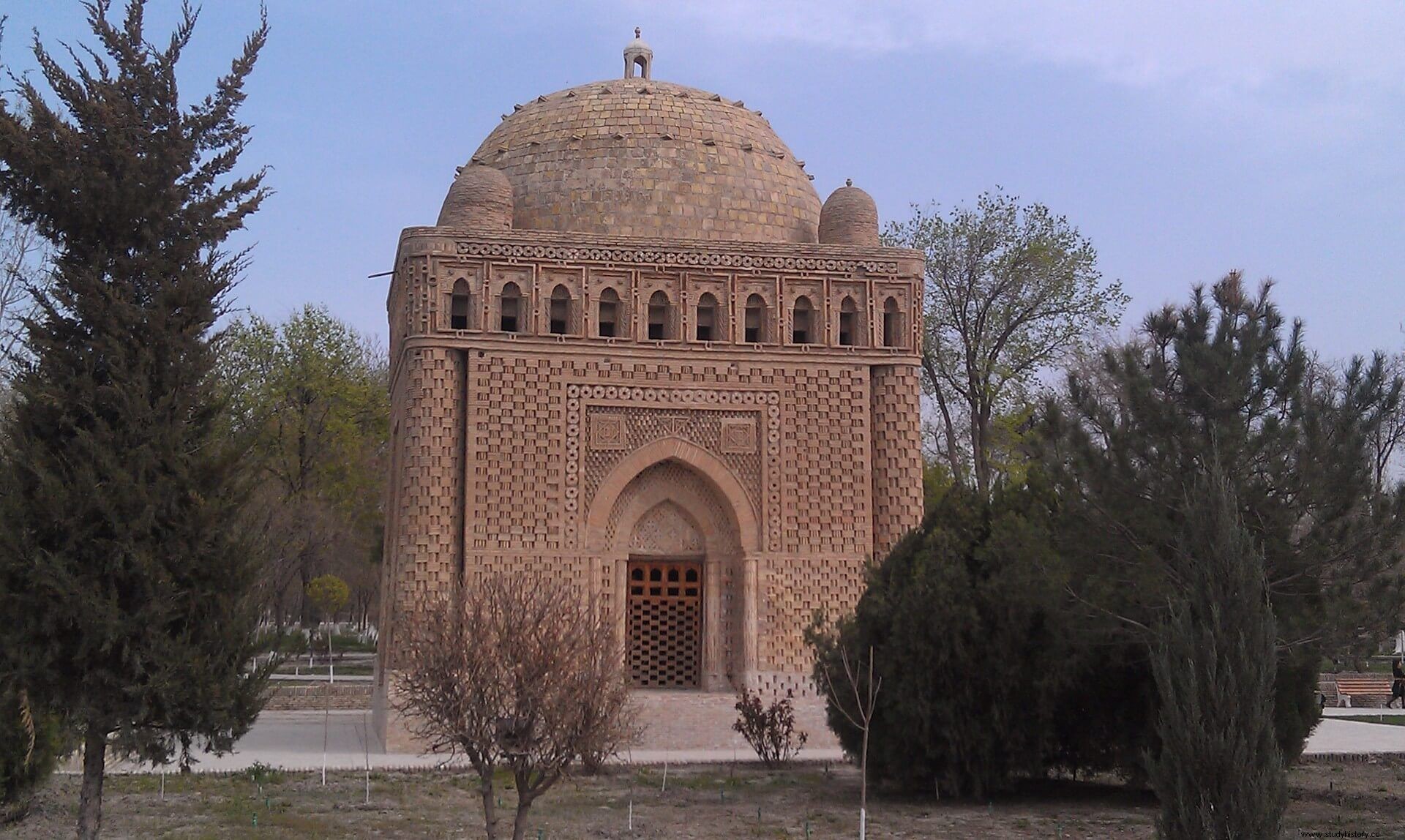
The course of the journey through the Islamic lands has no It is of particular interest to our narrator, as it follows the well-trodden traditional route of the main Silk Road route, which passed south of the Caspian Sea and entered Khorasan through Merv, Amul and Bukhara. The delegation spent three months in Jorasmia , and from this point the narration of the most interesting parts of the story takes place. One of the key moments is when Ibn Fadlan repeatedly emphasizes the great difficulties that the intense cold of the steppes of southern Russia posed for the advance of the expedition:
The geographer Yaqut would mention two centuries later that perhaps Ibn Fadlan was exaggerating on this point, especially in his reference to the total freezing of the river, but the truth is that the intrepid missionary he rarely made implausible observations. When the weather improved, two months passed until they reached their destination in the Bulgarian kingdom, for which they had to undertake the crossing of countless rivers with all the supplies.
As his journey progressed, uncertainty grew within him, especially given the volatile behavior of the semi-nomadic peoples of the steppes, as we have mentioned before. Despite everything, it is at this point where he offers more ethnographic details, since the customs of these peoples clearly impacted him. In the Risala the barbarism of the pagans is constantly mentioned; they are all gruff, dirty and often rude. Of the Khezmites he affirms that “they are the most vulgar people in their expressions and their nature, and that “their language is like the croaking of frogs”; The Oguz “do not wash when they defecate or when they urinate, nor do they bathe after seminal pollution or on other occasions. They have nothing to do with water, especially in winter”; For their part, the Bashkirs “were the most twisted among the Turks and the dirtiest among them […]. They shave their heads and beards and eat lice”, and even recounts how one of them “examined the seams of his sole and crushed a louse with his teeth”, while another “found a parasite on his clothes, cracked it with his nails from his fingers and then sucked on it, looked at me, made a gesture and said:ok!”
Ibn Fadlan is often amazed at customs that are shocking to him but that he wants to try to understand, and he is especially interested in the funerary traditions from the Turkic peoples –well known from archeology in the kurgans or burial mounds of these steppe cultures–, just like after the Rus or the Khazars. Of course, the habits related to religion powerfully attract his attention, as when he refers to the shamanism of the Bashkir tribes, who hung phallic-shaped amulets from their necks and worshiped twelve gods of nature. Along with these details, he gives us exquisite moments, such as when he describes the setting sun and the reddish tones of the sky on the horizon of the steppe in Bulgarian territory –“I admired the landscape at sunrise, and everything turned red, the land, the mountains and everything that a man could see when the sun rose”– or when he talks about the peculiarities of the territory and notes the usual electrical storms and the differences in the duration of day and night in those latitudes.
At the court of the Volga Bulgarian kingdom
Once you arrive at your destination, the travel experience is no less attractive. The Bulgarian was a semi-nomadic people of Turkic steppe origin who, attracted by the buoyant commercial activity in the region, both in an east-west and north-south direction, settled at the confluence of the Volga with the Kama and, thanks to this, developed a thriving domain that included roughly the territory of present-day Tatarstan. Like many of the Turkic peoples, they originally followed a shamanic religious tradition, but surely encouraged by possible support from their Khazarian rivals, who mostly professed the Jewish faith, King Almish embraced Islam at the beginning of the 10th century and had intent to Islamize the population. Apparently, one of the main tasks of Ibn Fadlan when he went to his court was to instruct him in religion and Islamic law, but in addition the Almish khan requested assistance from the caliph for the construction of a mosque and a fortification, in this case to defend himself from the Khazars and free himself from the tribute he paid them. According to Ibn Fadlan himself, the son of the Bulgarian king was a hostage in the court of the king of the Khazars, and he also wanted to take Almish's daughter as his wife, which he ended up doing by force. 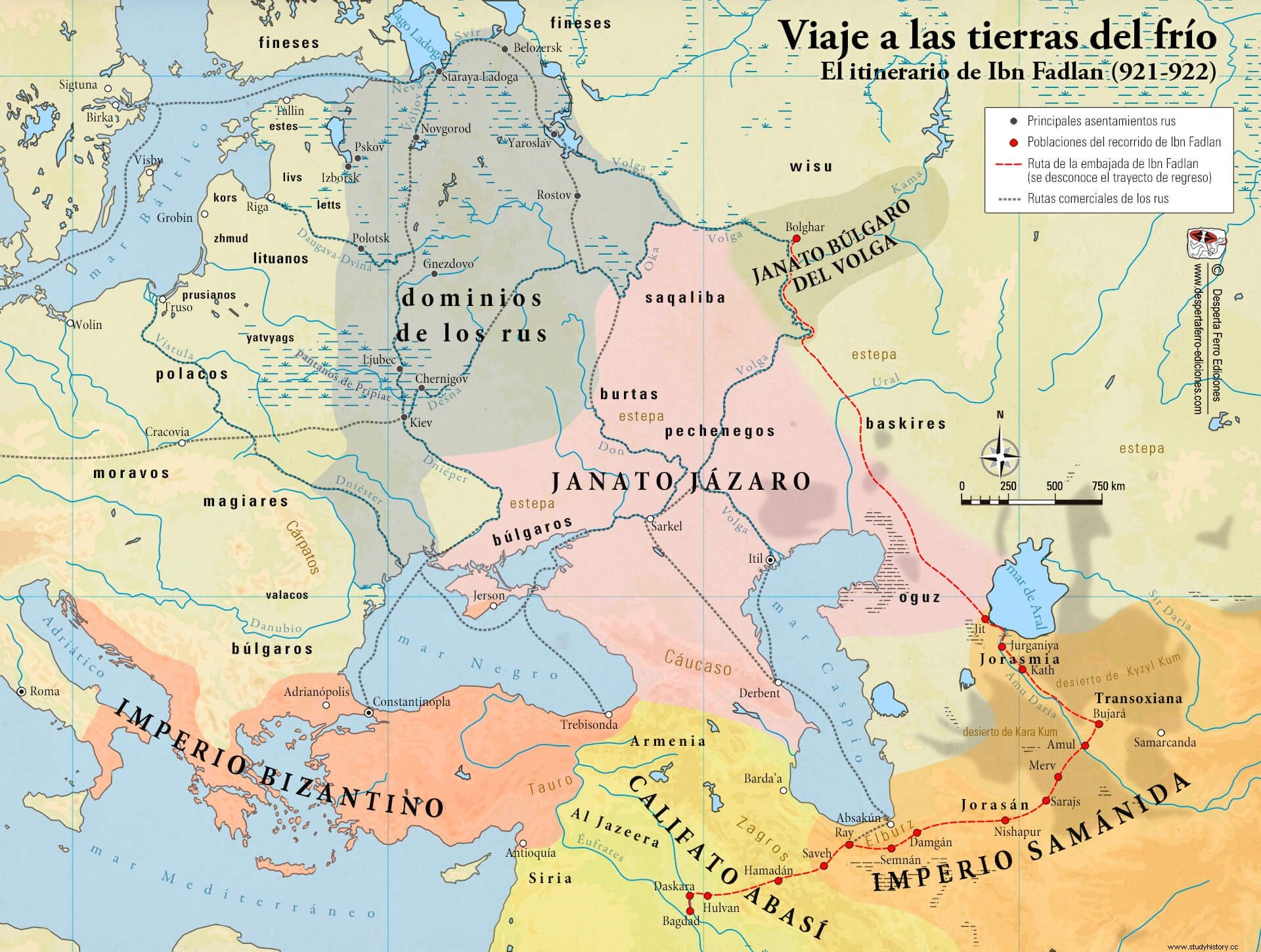
In any case, it is clear that Ibn Fadlan attended to the Bulgarian court as a missionary, and consequently the question of religion is the central axis on which the story of his stay in the Volga lands pivots. In fact, the difficulties he encounters in making peoples of nomadic traditions understand the Islamic faith are a constant in his travel narrative, and he repeatedly expresses concern about issues related to sexual pollution , adultery or the fact that women do not bother to cover themselves, especially in cases like that of the Bulgarians, among whom he watches astonished how men and women bathe in the river next to each other and naked, without covering themselves; or that of the Rus, of whom he mentions that they have sexual relations openly, without caring about privacy. But his stay in those lands was not easy. Not having the money promised by the caliph, Ibn Fadlan was left hanging by a thread at the mercy of the khan, with whom a very interesting psychological game of veiled threats was established in which he denied the missionary authority of the caliph's envoy since, by having lost his money, he was disobeying the caliph and therefore did not retain his protection:
Apparently, the thing did not go any further, although it is not clear how the matter between the two characters ended.
Judging by the volume of coins found in the different territories north of the Caspian, in the 10th century the flow of trade was greater through the region of the Volga Bulgars than was being in the Khazar kingdom, and despite the domination exercised by the latter, the situation would later be reversed, after the Rus invasion of the Khazar kingdom in 965, from which the Bulgarians would take advantage despite suffering the effects of it themselves campaign, according to the Andalusian traveler Abū Hāmid, who traveled to the region in the 13th century. The Khazars had their capital at Itil, near the mouth of the Volga, and part of Ibn Fadlan's account, incomplete, concerns this city and its population and traditions, although it is quite possible that he spoke from hearsay and had not visited never the city.
The Rus Vikings
In Ibn Fadlan's time, the waters of the Volga became a kind of highway in which the Scandinavians, Bulgarians, Byzantines, Khorasemites and Khazars converged. It is well known that, from the middle of the 9th century, peoples called Rus by written sources, who we know came mainly from Sweden, settled in the surrounding lands (see “Vikings in the East. The Scandinavian penetration in Eastern Europe during the viking era” in Desperta Ferro Antigua y Medieval #3). The Rus settled as early as the 8th century in Staraya Lagoda – their main settlement – Belozersk and Izborsk and later founded Novgorod and, further south, Rostov on the upper reaches of the Volga. On the banks of the Dnieper, they settled in kyiv, which took the Khazars around 880. After several raids with varying success towards Constantinople (years 860, 907, 941 and 1043, see «Dromón vs. dragon. The Black Sea in flames » in Desperta Ferro Ancient and medieval #6: Thalassocracies ) the Kievan Rus signed a series of commercial treaties with Byzantium very beneficial to them and asserted their dominance over the region. The Norse peoples had been trading with the Muslims for more than a century, and from the 8th century the Swedes established trade routes to the Black and Caspian Seas, attracted by the fur and slave trade of the Byzantine Empire and Islamic domains. The foundation of these fortified settlements had much to do with their character as commercial enclaves, and contributed to the rapid enslavement of their population and their customs.

The meeting with a group of Rus merchants by Ibn Fadlan's is probably the most commented aspect of this author's observations because of what he assumes as a first-hand source of some of the customs of these peoples. As a general rule, we have many accounts of Viking plunder and brawls, but very little reliable information about their customs and rites , given that their own written sources such as the sagas are of little use as historical sources and also generally correspond to later stages. Fortunately, archeology has provided a lot of very useful information on many of these issues, which can be contrasted with the testimony of the Muslim envoy to the Volga lands. The famous episode of the cremation of a rich Rus merchant on a ship, in true Viking style (see “Viking burials”, in Archeology and History No. 13) is one of the most commented and we are not going to insist on it here, although it is worth mentioning that in addition to the overwhelming details about the execution of the young slave at the hands of the mysterious old woman whom Ibn Fadlan indicates was called the "angel of death", other fascinating details are told that may hide other traditions mixed with Viking paganism, such as perhaps when he refers to the fact that they forced the horses to run until they sweated and foamed at the mouth before splitting them in two with swords and throw their remains into the ship. Of course, the ship burials of renowned people have a lot of archaeological evidence in Scandinavia -especially in Sweden-, which includes many of these details, perhaps even in some cases the execution of slaves together with their masters and without a doubt the sacrifice of many animals, especially dogs, sheep, and horses, in proportions that depended on the status of the person buried. On the other hand, Ibn Fadlan's encounter with the Rus' also draws our attention to another lesser-known and equally interesting episode that links to the importance of trade and is not without a certain humor:
If things did not go well for them, adds the Muslim sage, they would repeat the operation later, depositing more offerings in front of the minor figures, and if they were successful, they would perform a series of sacrifices to honor their gods:
Thousands of objects of Scandinavian material culture have been found in the territory of the Rus, both in the main fortifications and in some villages and in the many burial mounds full of burials endowed with grave goods, including some as interesting tombs as the Pskov burial chamber, in which a wealthy Scandinavian woman was buried in 957. In terms of habitat, excavations in Novgorod since the 1980s have uncovered much of the urban fabric of the city , with excellently preserved organic remains of buildings and streets paved with wood, as well as abundant textile remains and more than a thousand letters written in Cyrillic on birch bark that include receipts, accounts and mercantile dealings of the inhabitants of the city during the Viking Age.

The relationship with Scandinavian written sources and events history of the Rus has its best correlation in the epic episode of Yngvar's ill-fated military expedition, which inspired a fantastic saga (with giants and dragons included) and took place in 1035-1040, just over a century after the events narrated. in the Risala , within the framework of a period of revitalization of Rus' relations with Scandinavia, which led to such illustrious names as Olaf Tryggvason, Håkon Eiriksson or Harald Hardråda to tread the lands north of Byzantium. Apparently the Norns, left to their own devices by the recent Christianization of the Swedes, did not bode well for Yngvar's expedition, and very few of the 500 men who set out with him succeeded. Some thirty rune stones are preserved in Sweden (see "Storied Stelae and Viking Age Runestones in Scandinavia," in Archeology and History n.º 13) with inscriptions that remember those who fell in that company, who like so many congeners were rehired as mercenaries to fight the wars of others and tried their fortune with their own looting campaigns:
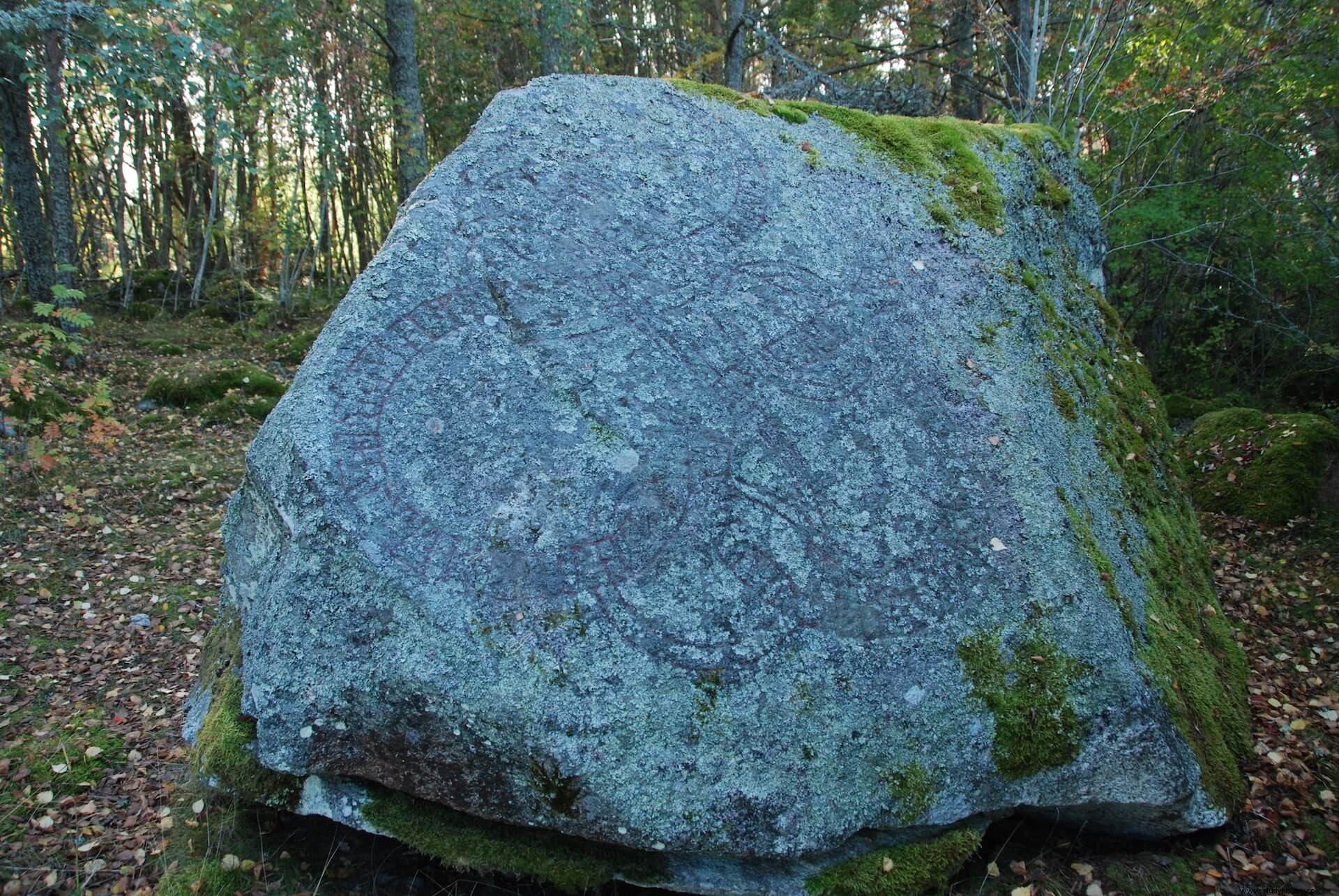
There are many other runestones from this time that keep Similar testimonies from other travelers who sought their luck in the east, but without a doubt the set of stelae related to Yngvar's expedition constitute the most striking example.
As with the pagan religion in Scandinavia, the ancient Norse customs of the Rus were diluted over time, and by the end of the 10th century the inhabitants of kyiv had given in to the insistence of the Byzantine missionaries and ended up accepting Greek Orthodox Christianity. Along the way, they had already accepted many customs derived from the Turkic peoples –perhaps the one that Ibn Fadlan indicates about the king of kyiv never getting off his throne, and if he wanted to ride, a horse was brought to him–, as well as from other peoples with whom they had crossed and lived, such as the Sami, the Finno-Ugrians and of course the Slavs; a scenario that ultimately was not far from the one that the Danish settlers lived in those times against the Franks in Normandy.
Ibn Fadlan, beyond fiction
In 1976 the successful novel Eaters of the dead was published by Michael Crichton. The character that inspired the protagonist of the play, which would later be brought to the big screen in a well-known film entitled The 13th Warrior (1999) is none other than the intrepid Ibn Fadlan, who in that narration also crossed paths with a group of Vikings. But that's about the comparisons. The real Ibn Fadlan never traveled alone, but was accompanied by many others, among whom he himself cites the Bulgarian ambassador who had arrived in Baghdad with his khan's letter, as well as various dignitaries and one of a number of jurists and teachers of the law that did not end up completing the entire journey. Along the way they joined caravans, sometimes huge, of some 5,000 men and 3,000 animals, by his own estimation. It may seem like an exaggerated number, but going into the steppe regions at the mercy of the attacks of some nomadic tribes with a small group of people was certainly not a good idea. For the rest, fictionalized stories, like the cinema, have little interest in historical reality, generally because it is considered not very epic –something truly surprising in this case–, although they make a great dent in the collective imagination and end up having repercussions on the proliferation of false ideas that are later difficult to deny.
Unlike the imaginative narratives in novels and movies, in addition to the multitude of clichés repeated over and over again about the Rus or the Vikings in general based on partial observations of the Risala , an aspect that has been very striking about Ibn Fadlan from the beginning is that he generally stayed away from adding fanciful details to his account; something on the other hand very frequent in the narratives of other Muslim travelers of his time and later (see "The literary image of the East in the Middle Ages", in Archeology and History No. 29)–. In one of these rare episodes, the Almish king takes him to see the skeletal remains of a gigantic man whom he had hanged and who had happened to come across the river one day. Instantly he began to terrify the local people, and he was so scary, the kids died of fright and pregnant women couldn't get close for fear of miscarriage:
Almish allegedly explains to Ibn Fadlan that this ogre came from the people of Gog and Magog, mythical characters who, according to Islamic tradition (Ibn Khordadbeh, Book of Routes and Kingdoms ) inhabited the subarctic regions and were separated from the rest of the world by an immense wall of copper and iron erected by none other than Alexander the Great; a useful protection up to a point, since at the end of time it would break to wreak havoc on humanity. Examples like this, as well as some unbelievable exaggerations that are interpolated only very occasionally in the Risala , generally correspond to stories that the locals relate to Ibn Fadlan, but that are not the result of his own experience. On other occasions, these observations are understood as the result of bewilderment in the face of a world very different from the one he knew.
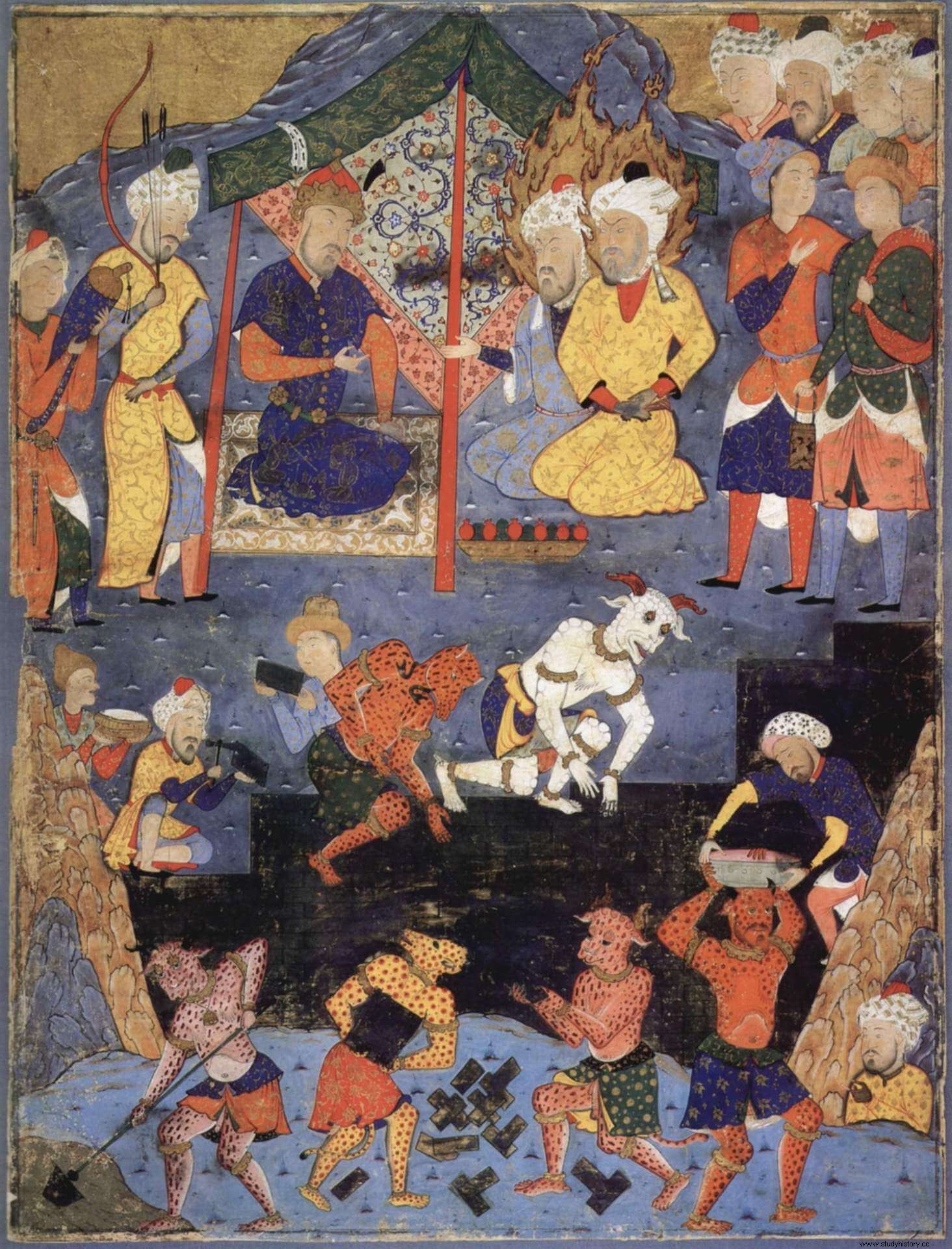
We don't know what happened on the journey back of Ibn Fadlan –who returned to Baghdad we know thanks to the references of the geographer Yaqut–, or if his embassy and the absence of money were an unavoidable stumbling block for subsequent diplomatic relations between the Bulgarians and Baghdad, but despite possibly failing in his final goal, he unexpectedly gave us a jewel, a vivid and real story that, in his reading, places us before the visual spectacle of the northern lights, the setting sun in the steppe or the intense fire of a Viking burial dyeing the horizon. Meanwhile, we watch in fascination and recreate the image over and over again in a constant litany, like that of that battle that the djinn were to fight. until the end of time.
Bibliography
- Baumer, C. (2016):The history of Central Asia (III).The Age of Islam and the Mongols . London-New York:I.B.Tauris.
- Brink, S.; Price, N. (2012) (eds.):The Viking world . London-New York:Routledge.
- Carlsson, D.; Selin, A. (2012) (eds.):In the footsteps of Rurik. A guide to the Viking History of Northwest Russia . Stockholm:Books on Demand GmbH.
- Ferguson, R. (2010):The Hammer and the Cross. A New History of the Vikings . London:Penguin Books.
- Hjardar, K.; Vike, V. (2019):Vikingos en guerra . Madrid:Awake Ferro Editions.
- Frye, R. (2010):Ibn Fadlan’s journey to Russia. A tenth-century traveller from Bagdhad to the Volga River . Princeton:Markus Wiener Publishers.
- Lunde, P.; Stone, C. (eds., trad.) (2012):Ibn Fadlān and the Land of Darkness. Arab Travellers in the Far North . London:Penguin Books.
- Page, R. I. (2014):Chronicles of the Vikings . London:The British Museum.
- Palsson, H.; Edwards, P. (1989) (eds.; trad.):Vikings in Russia. Ynvar’s saga and Eymund’s saga . Edinburgh:Polygon.
